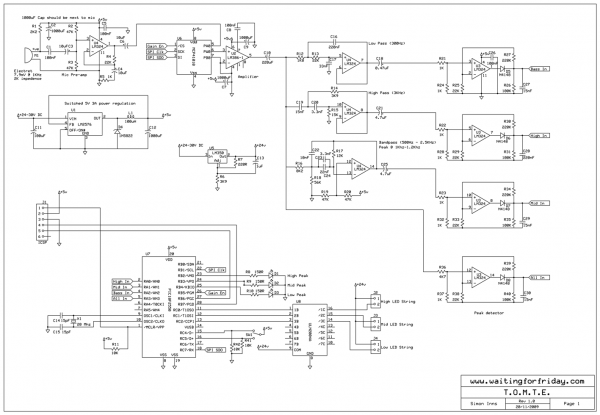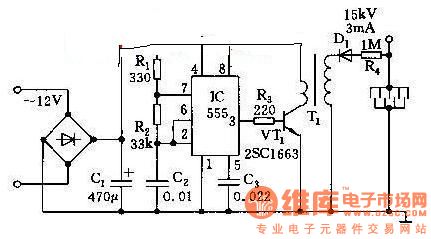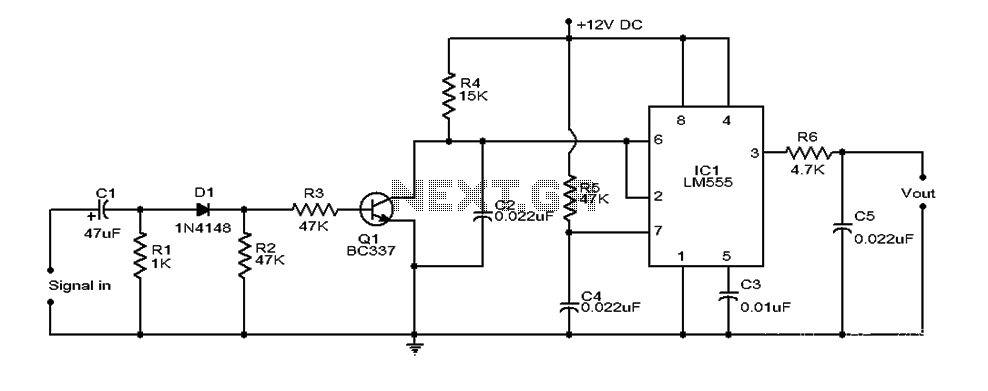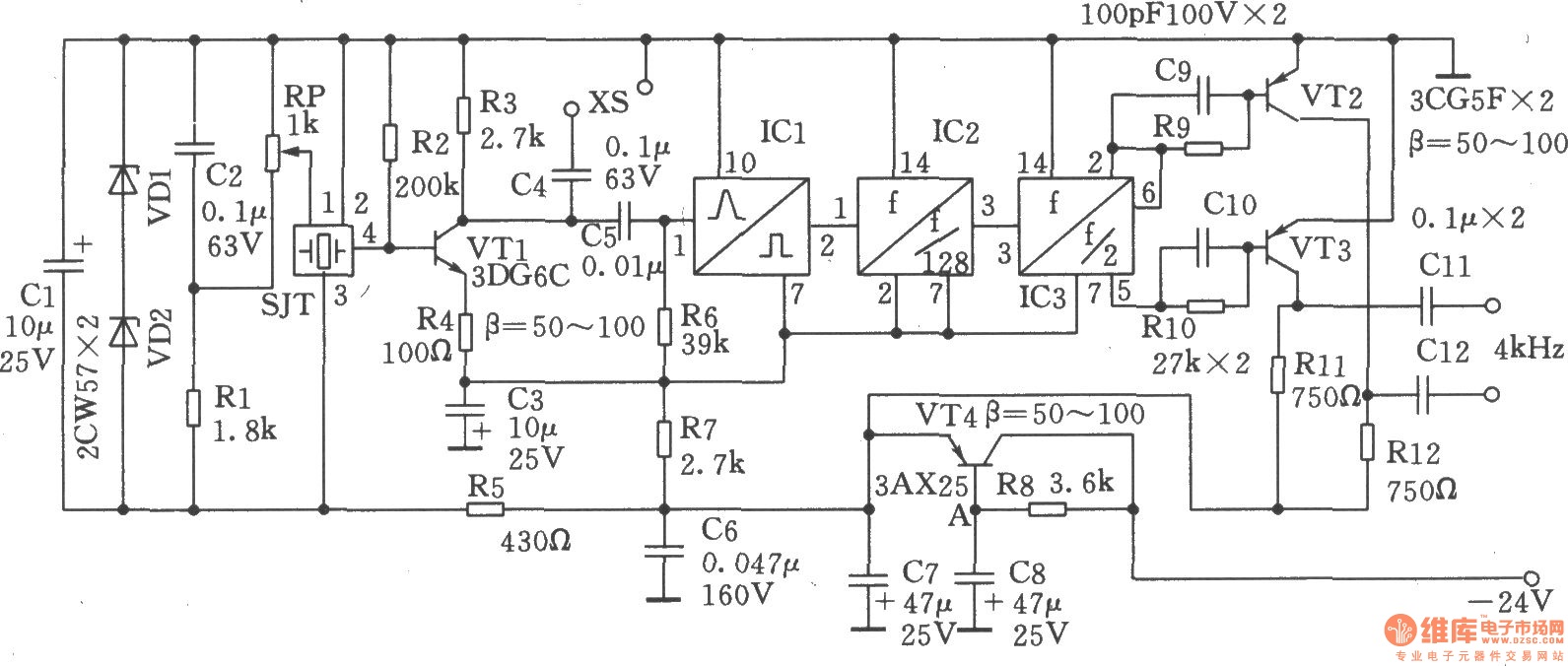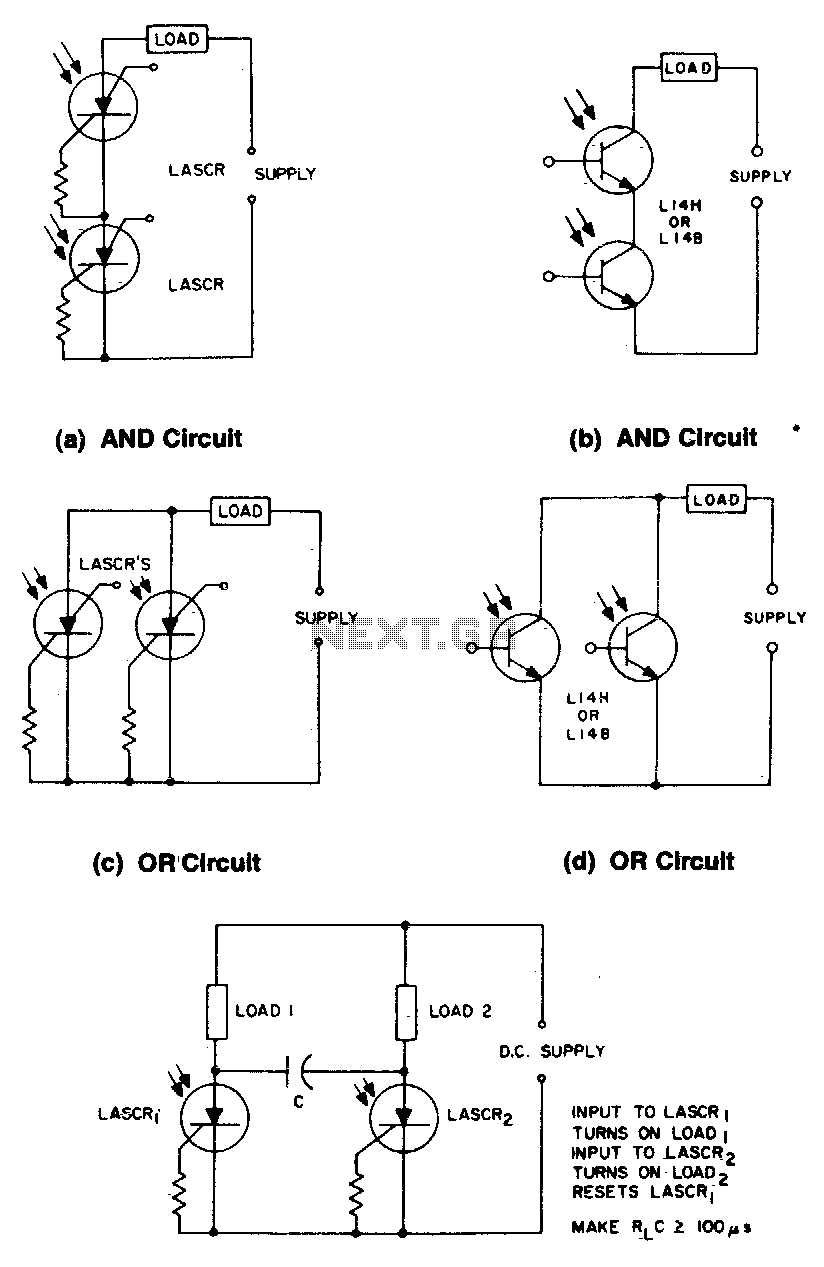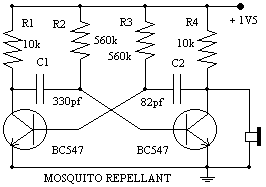
Low Voltage Microphone Preamplifier Circuit
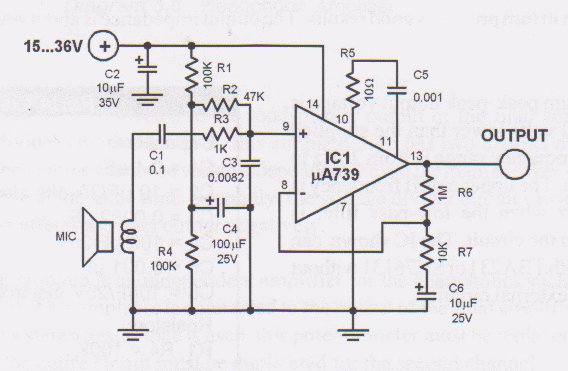
This circuit is a low voltage microphone preamplifier that operates with a 1.5V power supply. It features a reference with a 500 kHz unity-gain bandwidth, functioning as a preamplifier with a gain of 100. The output from this stage is routed through a gain-control potentiometer to an operational amplifier (op-amp), which is configured to provide a gain of 10. This configuration results in an overall gain of 60 dB within a 10 kHz bandwidth when unloaded, and 5 kHz when loaded at 500 ohms. The input impedance is 10 k ohms. Although using the reference in this manner may introduce excess noise, the low reference voltage helps to keep the noise contribution minimal. The input noise voltage for this setup is approximately 440-500 nV/√Hz, which is comparable to that of the op-amp.
The low voltage microphone preamplifier circuit is designed to amplify audio signals from microphones with minimal distortion and noise. The use of a 1.5V power supply allows for compatibility with battery-operated devices, enhancing portability. The preamplifier stage, characterized by a 500 kHz unity-gain bandwidth, ensures that the circuit can effectively handle a wide range of audio frequencies, making it suitable for various applications, including voice recording and sound reinforcement.
The gain of 100 in the preamplifier stage significantly boosts the microphone signal, which is often weak. Following this stage, the output is adjusted using a gain-control potentiometer, allowing for fine-tuning of the signal level before it is sent to the op-amp. The op-amp is configured for a gain of 10, which further amplifies the signal to achieve a total gain of 60 dB. This level of amplification is adequate for most audio applications, providing a strong signal that can be processed by subsequent audio equipment without introducing significant noise.
The input impedance of 10 k ohms is designed to match the output of typical microphones, ensuring that the circuit does not load the microphone excessively, which could lead to signal degradation. Additionally, the design takes into account the potential for noise generation. While using the reference voltage as a preamplifier can introduce some noise, the low voltage helps to minimize this effect. The calculated input noise voltage of 440-500 nV/√Hz is a critical specification, indicating that the circuit is capable of maintaining a high signal-to-noise ratio, which is essential for high-fidelity audio applications.
This microphone preamplifier circuit represents a practical solution for low-voltage audio amplification needs, combining efficiency and performance in a compact design.This is a low voltage microphone preamplifier circuit with a 1. 5V power supply. The reference, with a 500 kHz unity-gain bandwidth, is used as a preamplifier with a gain of 100. Its output is fed through a gain-control potentiometer to the op amp, which is connected for a gain of 10. The combination gives a 60 dB gain with a 10 kHz bandwidth, unlo aded, and 5 kHz loaded at 500 ©. Input impedance is 10 k ©. Potentially, using the reference as a preamplifier in this fashion can cause excess noise. However, because the reference voltage is low, the nose contribution, which adds root-mean-square, is likewise low. The input noise voltage in this connection is 440-500 nV Hz, about equal to that of the amp. 🔗 External reference
The low voltage microphone preamplifier circuit is designed to amplify audio signals from microphones with minimal distortion and noise. The use of a 1.5V power supply allows for compatibility with battery-operated devices, enhancing portability. The preamplifier stage, characterized by a 500 kHz unity-gain bandwidth, ensures that the circuit can effectively handle a wide range of audio frequencies, making it suitable for various applications, including voice recording and sound reinforcement.
The gain of 100 in the preamplifier stage significantly boosts the microphone signal, which is often weak. Following this stage, the output is adjusted using a gain-control potentiometer, allowing for fine-tuning of the signal level before it is sent to the op-amp. The op-amp is configured for a gain of 10, which further amplifies the signal to achieve a total gain of 60 dB. This level of amplification is adequate for most audio applications, providing a strong signal that can be processed by subsequent audio equipment without introducing significant noise.
The input impedance of 10 k ohms is designed to match the output of typical microphones, ensuring that the circuit does not load the microphone excessively, which could lead to signal degradation. Additionally, the design takes into account the potential for noise generation. While using the reference voltage as a preamplifier can introduce some noise, the low voltage helps to minimize this effect. The calculated input noise voltage of 440-500 nV/√Hz is a critical specification, indicating that the circuit is capable of maintaining a high signal-to-noise ratio, which is essential for high-fidelity audio applications.
This microphone preamplifier circuit represents a practical solution for low-voltage audio amplification needs, combining efficiency and performance in a compact design.This is a low voltage microphone preamplifier circuit with a 1. 5V power supply. The reference, with a 500 kHz unity-gain bandwidth, is used as a preamplifier with a gain of 100. Its output is fed through a gain-control potentiometer to the op amp, which is connected for a gain of 10. The combination gives a 60 dB gain with a 10 kHz bandwidth, unlo aded, and 5 kHz loaded at 500 ©. Input impedance is 10 k ©. Potentially, using the reference as a preamplifier in this fashion can cause excess noise. However, because the reference voltage is low, the nose contribution, which adds root-mean-square, is likewise low. The input noise voltage in this connection is 440-500 nV Hz, about equal to that of the amp. 🔗 External reference
